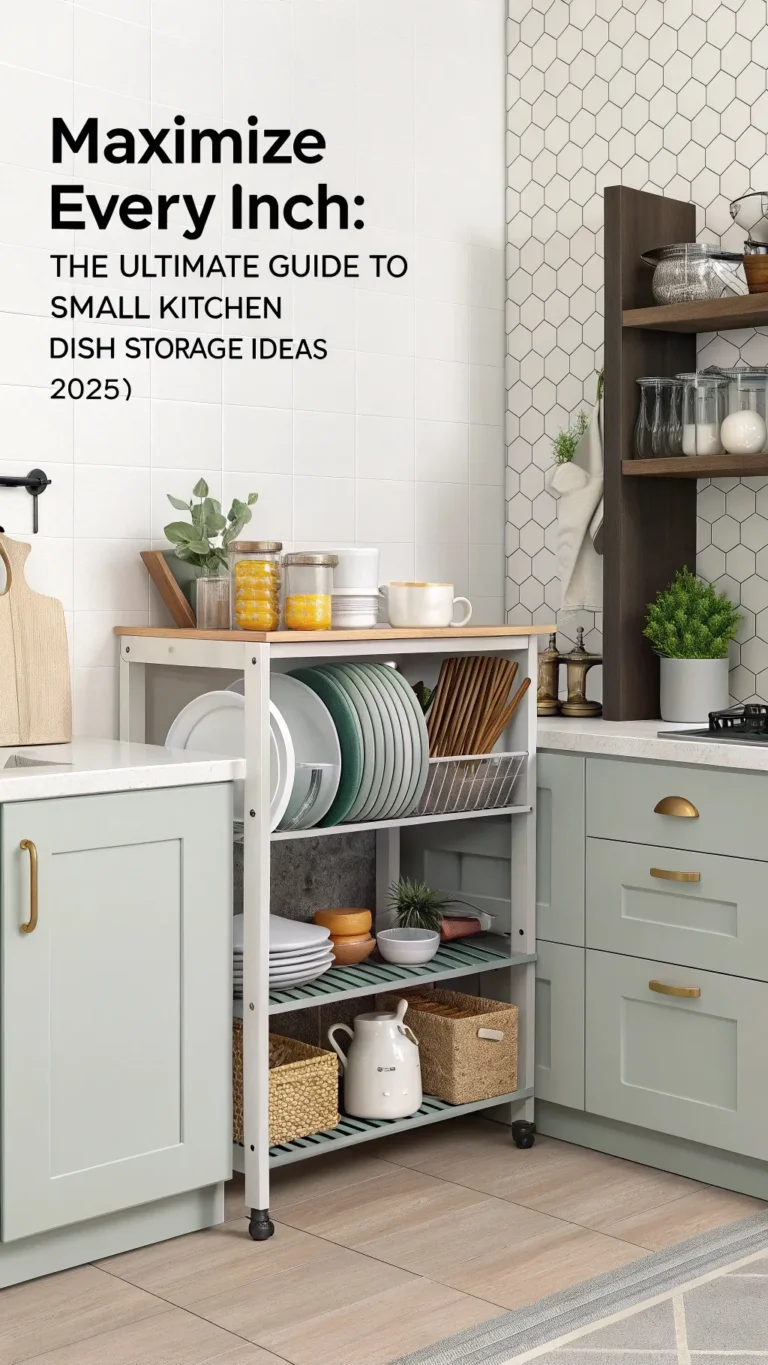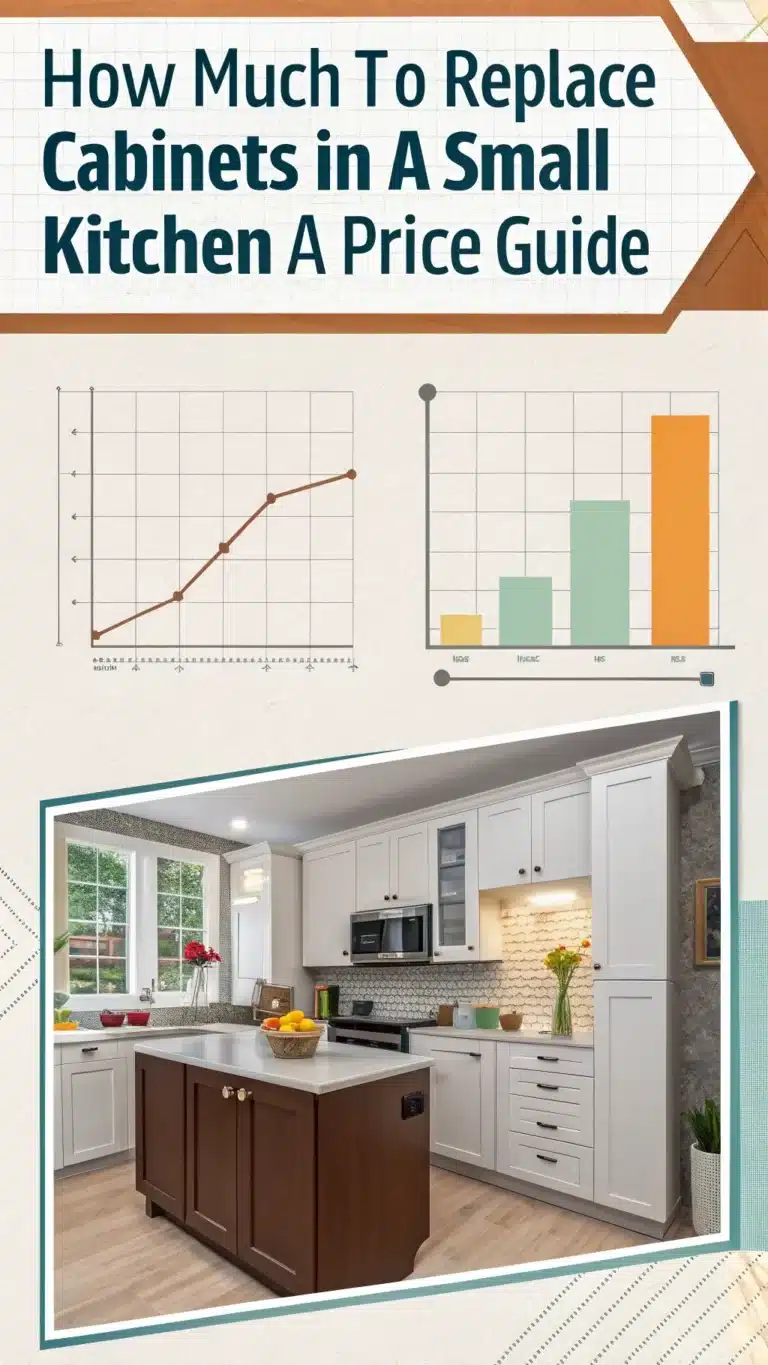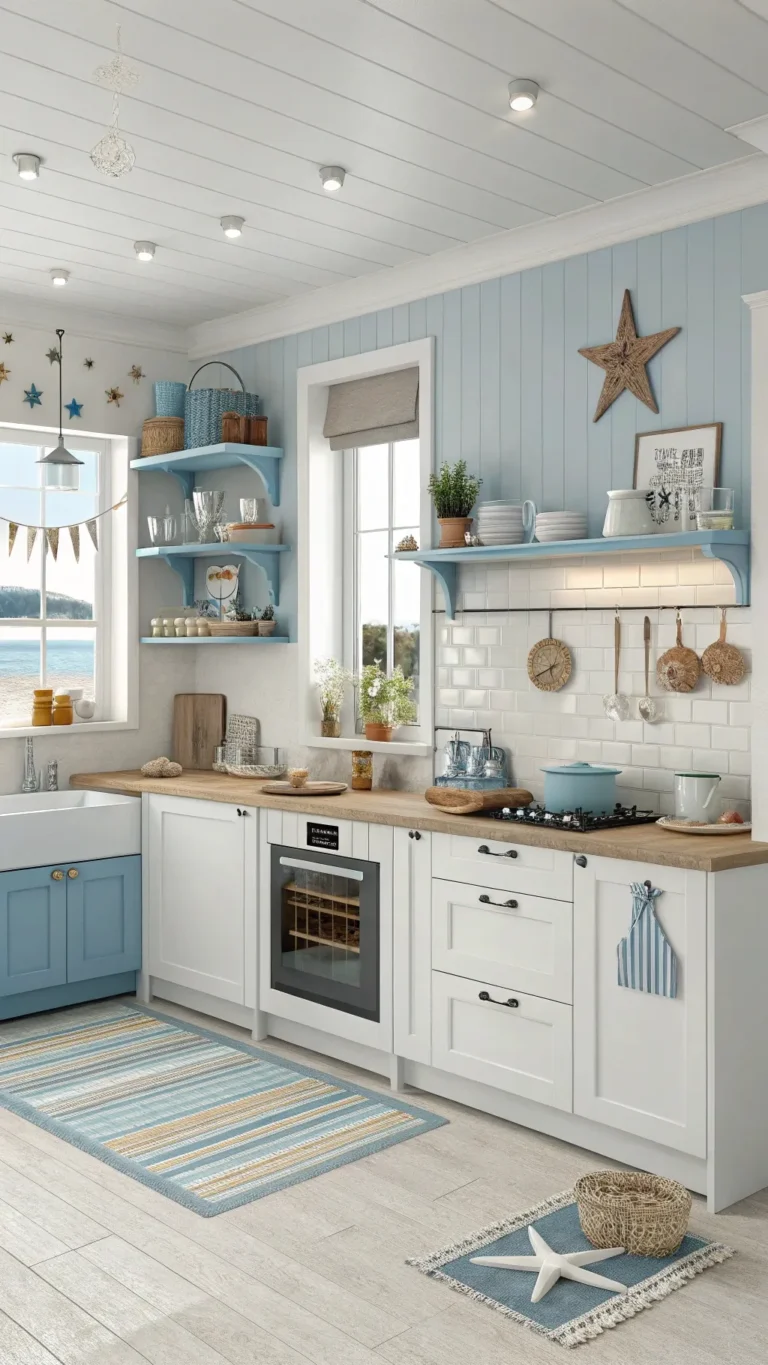Introduction
Small kitchens often feel crowded and full of clutter. They can make cooking and cleaning stressful. Imagine a kitchen that looks clean, simple, and feels calm. A place where everything has its spot and you enjoy spending time.
Limited space and too many items cause most problems in small kitchens. A minimalist approach solves this by focusing on keeping only what matters. Minimalism means less stuff, clear surfaces, and smart use of space.
This article shares 10 clear and practical small kitchen minimalist ideas for 2025. These cover design, storage, and stylish touches that improve any space. Ideas include tough decluttering, smart storage, efficient layouts, and up-to-date appliances.
You can create a functional, beautiful kitchen using these simple steps. Think of this as a guide to transforming your cooking space with minimal effort.
1. The Foundation – Decluttering & Defining Essentials
Idea 1: Embrace Ruthless Decluttering (The 80/20 Rule for Kitchens)
Decluttering forms the base of minimalist kitchens. Too many unused items make space tight. Experts note that often 20% of kitchen tools get used 80% of the time. Focus on the items you really need.
Try this: Empty one cabinet or drawer fully. Sort items into three groups: Keep, Donate/Sell, and Discard. Ask yourself:
– Have I used this in the past year?
– Do I own duplicates?
– Is it really useful or just taking space?
Set a 15-30 minute timer. Work in small bursts to avoid getting overwhelmed. Be honest but gentle with yourself about letting go. Research from Psychology Today shows that clutter can raise stress levels significantly.
Tip: After decluttering, check out “Ultimate Guide to Kitchen Drawer Organizers” to organize what stays.
Idea 2: Define Your Kitchen Essentials (Pare Down Purposefully)
Knowing what you really use makes a kitchen efficient. Some keep many gadgets they think might help someday. In reality, a good knife set, versatile pots, and a few bowls may suffice.
Track your kitchen usage for one week. Note which items you use often. This way, you avoid keeping clutter “just in case.” Multi-functional tools save space and money.
Here is a possible essential list for a minimalist kitchen:
– Quality chef’s knife
– One or two versatile pans
– Cutting board
– Mixing bowl
– Basic utensils (spoon, spatula, whisk)
– Simple dishware set
Investing in durable, multi-purpose items saves room and prevents clutter.
2. Maximizing Space with Smart Storage
Idea 3: Go Vertical & Utilize Wall Space
Most small kitchens miss out on their wall potential. Adding shelves, racks, or magnetic strips frees up counters and cabinets. You can hang pots, knives, or spices neatly.
Open shelving can display items you use daily. Pegboards adapt well to hold different kitchen tools. Vertical racks or hooks allow easy, quick access.
Measure your wall space first. Plan which items to store vertically—keep heavier things low, lighter ones higher. For renters, removable pegboards offer flexibility.
DIY open shelves work wonders for small spaces. Curious? Check the article “DIY Open Shelving for Small Spaces” for budgeting and ideas.
Idea 4: Optimize Inside Cabinets & Drawers
Good storage hides clutter while keeping tools handy. Pull-out shelves reveal all items, avoiding lost jars stuck at the back. Lazy susans fit inside corner cabinets making use of tricky spaces.
Drawer dividers separate utensils and gadgets. Inside cabinet doors offer extra racks for wraps, cutting boards, or cleaning supplies. Keep like-items together in zones—pots near the stove, cleaning under the sink.
Investing in small organizers saves time and frustration. Experts say well-organized drawers reduce cooking time by up to 20%.
Try this easy list of organizers worth trying:
– Drawer dividers
– Pull-out baskets
– Door-mounted racks
– Under-sink trays
3. Streamlining Layout & Functionality
Idea 5: Optimize Your Kitchen Workflow (The Work Triangle & Beyond)
A classic kitchen tip focuses on the “work triangle”—the stove, sink, and fridge form three points for efficient movement. In small kitchens, clear paths make a big difference.
Create zones:
– Prep zone near sink or cutting area
– Cooking zone close to stove
– Cleaning zone with sink and trash
Place frequently used tools in their right zone. This saves extra steps and frustration.
Draw your kitchen layout on paper. Spot if anything blocks movement or access. Adjust drawer contents or shelf height to improve.
Idea 6: Choose Multi-Functional Items & Furniture
Multi-use tools save space. Cutting boards that fit over the sink add prep space. Nesting bowls stack so they take less room. Expandable tables offer dining or work areas as needed.
Mobile kitchen carts can be stored away but provide extra prep or storage when pulled in. Some ovens double as microwaves or grills, reducing appliance count.
Ask yourself this before buying: “Can this item do more than one task?”
Here are examples of multi-functional items:
– Cutting board with strainer
– Nesting mixing bowls
– Rolling kitchen cart with shelves
– Multi-cooker with pressure and slow cooking
4. Embracing Minimalist Aesthetics & Style
Idea 7: Simplify Color Palette & Materials
Neutral color palettes help small spaces look larger and calmer. Whites, soft grays, and natural wood tones blend well. Using only two or three colors keeps design clean and simple.
Natural materials like wood or stone add warmth and texture without clutter. Smooth, clean lines in cabinetry and furniture match minimalism.
Select 2-3 colors or materials. Use them consistently in walls, cabinets, countertops, and accessories.
Idea 8: Mindful Decor & Clear Surfaces
Minimalism is not about empty rooms. It means choosing decor items carefully. Consider a nice soap dispenser, a small plant, or a bowl of fruit.
Keep counters mostly clear. Limit the items left out to a “landing strip” area near the sink or stove. Open shelves can hold a few beautiful, functional objects like cookbooks or jars.
Style open shelves with uniform containers or matching dishes for an organized look. Less is more.
5. Appliances, Tech & 2025 Trends
Idea 9: Select Compact & Integrated Appliances
Small kitchens benefit from smaller appliances. A 24-inch refrigerator or range fits well and does the job. Panel-ready appliances blend into cabinets, creating a seamless look.
Multi-cookers that combine slow cooker, rice cooker, and pressure cooker save counter space. Countertop dishwashers or single-burner induction cooktops offer options for small areas.
Measure appliance sizes carefully. Match your real cooking needs, not just standard options.
Check product reviews on compact appliances. One example is the recent XYZ Compact Oven Review.
Idea 10: Embrace Smart & Sustainable Choices (Focus on 2025 Trends)
Sustainability grows each year in home design. Bamboo cutting boards, recycled glass countertops, and salvaged wood shelves last long and reduce waste. Energy Star appliances save electricity and cut bills.
Smart kitchen tech improves efficiency. Smart refrigerators help track groceries. Induction cooktops give precise control. Smart faucets reduce water use.
Choose products with Energy Star labels. The Energy Star website offers guides for selecting appliances.
For smart kitchen gadget tips, see “Top 5 Smart Kitchen Gadgets for 2025.” For sustainable ideas, try “Choosing Sustainable Materials for Your Home.”
Frequently Asked Questions (FAQs)
How do I start decluttering my small kitchen effectively?
Start with one drawer or cabinet. Sort items into keep, donate, or discard. Use a timer to work in short sessions.
Can I create a minimalist kitchen if I’m renting?
Yes. Use removable shelves or hooks. Choose furniture that is easy to move.
Is minimalist design practical for cooking enthusiasts or families?
Absolutely. Focus on essentials and quality tools. Keep zones organized for quick access.
What are the most essential items for a truly minimalist kitchen?
A good knife, versatile pan, cutting board, mixing bowl, and basic utensils.
How do I maintain a minimalist look and feel long-term?
Regularly review your items. Only add new things if you need them. Keep surfaces clear daily.
Conclusion
Small kitchens can feel spacious and peaceful with the right approach. Implementing these 10 small kitchen minimalist ideas leads to better use of space and less stress. You gain a calm, organized, and beautiful kitchen that fits your lifestyle.
Minimalism means choosing quality over quantity. It helps focus on what matters most. Begin with decluttering or using wall space. Simply pick one or two ideas and watch your kitchen improve.
Create the minimalist kitchen you dream of—a place where you enjoy cooking and gathering in a compact, stylish space. The journey to minimalist small kitchen design starts now.





